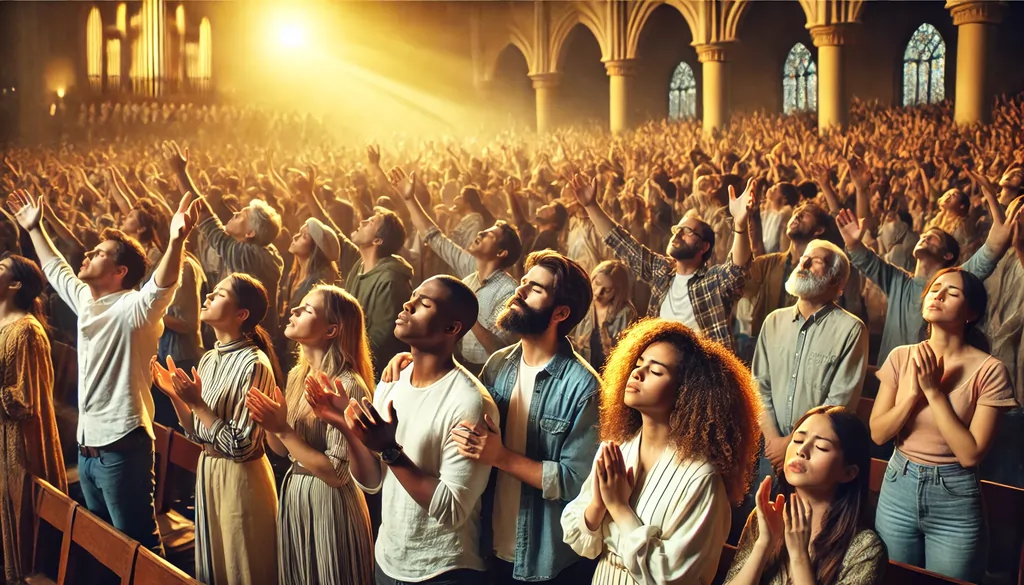Preaching and Worship: The Pillars of Revival #
Throughout Christian history, revivals have been characterized by fervent preaching and Spirit-led worship. While preaching often acts as the spark that ignites revival, worship is the sustaining force that deepens and prolongs the movement. Worship invites the presence of God, softens hearts, and creates an atmosphere where transformation flourishes.
Case Studies in Revival: The Role of Worship
Both preaching and worship played significant roles in 20th-21st century Christian revivals. Preaching was the catalyst and worship often served as a supporting force that helped sustain, deepen and prolong the length of revivals.
1. The Azusa Street Revival (1906–1915) – Preaching with Spirit-Led Worship
- Leader: William J. Seymour
- Preaching: Emphasized baptism of the Holy Spirit and speaking in tongues.
- Worship: Unstructured, with spontaneous prayer, tongues, and extended worship.
- Impact: Preaching sparked the revival, but worship played a key role in sustaining it.
2. The Jesus Movement (1960s–1970s) – Worship Fueled a Revival Among Youth
- Leaders: Chuck Smith, Lonnie Frisbee
- Preaching: Simple gospel message that led thousands to Christ.
- Worship: Shifted from hymns to contemporary music styles.
- Impact: Worship became central, but preaching was the foundation.
3. The Toronto Blessing (1994–1996) – Worship-Driven Renewal
- Leader: John Arnott
- Preaching: Focused on God’s love and personal renewal.
- Worship: Prolonged, spontaneous worship with spiritual manifestations.
- Impact: Worship played a major role in sustaining revival.
4. The Melbourne Revival (1902) – Preaching Sparked National Awakening
- Leader: R.A. Torrey
- Preaching: Repentance, faith, and holiness were central themes.
- Worship: Traditional hymn singing.
- Impact: Preaching was the driving force, leading to over 8,000 conversions.
5. The Modesto Revival (1990s) – Evangelistic Preaching Led the Charge
- Leader: Greg Laurie
- Preaching: Evangelistic, biblical preaching calling people to repentance.
- Worship: Contemporary Christian music played a role but was secondary.
- Impact: Preaching was the primary force behind conversions.
6. The Brownsville Revival (1995–2000) – Preaching and Worship Combined
- Leaders: John Kilpatrick, Steve Hill
- Preaching: Fiery calls to repentance and holiness.
- Worship: Lindell Cooley’s worship created a revival atmosphere.
- Impact: A balance of preaching and worship made this revival last.
7. The Asbury Revival (2023) – Worship Sustained It
- Location: Asbury University, Kentucky
- Preaching: Simple message on love and humility.
- Worship: Continuous worship and prayer fueled the revival.
- Impact: Worship was the dominant factor in sustaining the movement.
The most balanced revivals held strong preaching and Spirit-led worship working together.
The Power of Worship in Sustaining Revival
While preaching is the necessary foundation of revival, worship often determines its longevity and depth. Worship fosters an environment where the Holy Spirit moves freely, allowing individuals to encounter God personally and corporately. When revivals balance preaching with Spirit-led worship, they tend to have a more profound and lasting impact.
Worship is a catalyst, not just a complement to revival. In many revivals, preaching is rightly credited as the initiating force. However, history reveals that worship is more than a supporting element—it is a catalyst that fuels and sustains the fire of revival. When churches and believers recognize the power of worship, they unlock a deeper, more transformative move of God.
FAQ’s:
In what ways can you move beyond routine worship and enter into a deeper, Spirit-led encounter with God?
How has worship transformed your heart and mind, leading you to greater obedience and love for Christ?
What would it look like for your church or community to experience revival through passionate, authentic worship?





